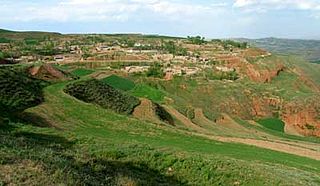
Dalai Lama is a title given by the Tibetan people to the foremost spiritual leader of the Gelug or "Yellow Hat" school of Tibetan Buddhism, the newest and most dominant of the four major schools of Tibetan Buddhism. The 14th and current Dalai Lama is Tenzin Gyatso, who lives as a refugee in India. The Dalai Lama is also considered to be the successor in a line of tulkus who are believed to be incarnations of Avalokiteśvara, the Bodhisattva of Compassion.

Sonam Gyatso was the first to be named Dalai Lama, although the title was retrospectively given to his two predecessors.

The Panchen Lama is a tulku of the Gelug school of Tibetan Buddhism. Panchen Lama is one of the most important figures in the Gelug tradition, with its spiritual authority second only to Dalai Lama. Along with the council of high lamas, he is in charge of seeking out the next Dalai Lama. Panchen is a portmanteau of Pandita and Chenpo, meaning "great scholar".

Ngawang Lobsang Thupten Gyatso Jigdral Chokley Namgyal, abbreviated to Thubten Gyatso was the 13th Dalai Lama of Tibet, enthroned during a turbulent era and the collapse of the Qing Empire. Referred to as "the Great Thirteenth", he is also known for redeclaring Tibet's national independence, and for his reform and modernization initiatives.

Kelzang Gyatso, also spelled Kalzang Gyatso, Kelsang Gyatso and Kezang Gyatso, was the 7th Dalai Lama of Tibet, recognized as the true incarnation of the 6th Dalai Lama, and enthroned after a pretender was deposed.

Chushi Gangdruk was a Tibetan guerrilla group. Formally organized on 16 June 1958, the Chushi Gangdruk guerrilla fighters fought the forces of the People's Republic of China (PRC) in Tibet from 1956 to 1974.
Shabdrung Lama Kunga Thartse Rinpoche is a Tibetan teacher of the Sakya school of Vajrayana Tibetan Buddhism. Lama Kunga Rinpoche is licensed in California to perform marriages with a Tibetan Buddhist ceremony.

Patrul Rinpoche (1808–1887) was a teacher and author from the Nyingma school of Tibetan Buddhism.

Reting Rinpoche was a title held by abbots of Reting Monastery, a Buddhist monastery in central Tibet.

Taktser or Tengtser or Hongya Village is a village in Shihuiyao Township, Ping'an District, Haidong, in the east of Qinghai province, China,. Tibetan, Han and Hui Chinese people populate the village which is notable as the birthplace of the 14th Dalai Lama, Tenzin Gyatso.

Thubten Jigme Norbu, recognised as the Taktser Rinpoche, was a Tibetan lama, writer, civil rights activist and professor of Tibetan studies and was the eldest brother of the 14th Dalai Lama, Tenzin Gyatso. He was one of the first high-profile Tibetans to go into exile and was the first to settle in the United States.

Kumbum Monastery, also called Ta'er Temple, is a Tibetan gompa in Lusar, Huangzhong County, Xining, Qinghai, China. It was founded in 1583 in a narrow valley close to the village of Lusar in the historical Tibetan region of Amdo. Its superior monastery is Drepung Monastery, immediately to the west of Lhasa. It is ranked in importance as second only to Lhasa.

Lobsang Tubten Jigme Gyatso (bot=བློ་བཟང་ཐུབ་བསྟན་འཇིགས་མེད་རྒྱ་མཚོ་), officially the 8th Arjia Hotogtu(bot=ཨ་ཀྱཱ་ཧོ་ཐོག་ཐུ།), born 1950 in Haiyan County, Qinghai) is one of the most prominent Buddhist teachers and lamas to have left Tibet. At age two, Arjia Rinpoche was recognized by Choekyi Gyaltsen, 10th Panchen Lama as the 20th Arjia Danpei Gyaltsen, the reincarnation of Je Tsongkhapa's father, Lumbum Ghe, the throne holder and abbot of Kumbum Monastery. He has trained with lineage teachers, such as the 14th Dalai Lama, the 10th Panchen Lama, and Gyayak Rinpoche—from whom he received many sacred teachings and ritual instructions.

Tsipön Lungshar born Dorje Tsegyal (1880–1938) was a noted Tibetan politician who was accused by conservative political opponents of attempting to become the paramount figure of the Tibetan government in the 1930s, by planning a communist coup following the death of the 13th Dalai Lama.

Tsepon Wangchuk Deden Shakabpa was a Tibetan nobleman, scholar, statesman and former Finance Minister of the government of Tibet.

The Kashag was the governing council of Tibet during the rule of the Qing dynasty and post-Qing period until the 1950s. It was created in 1721, and set by Qianlong Emperor in 1751 for the Ganden Phodrang in the 13-Article Ordinance for the More Effective Governing of Tibet. In that year the Tibetan government was reorganized after the riots in Lhasa of the previous year. The civil administration was represented by Council (Kashag) after the post of Desi was abolished by the Qing imperial court. The Qing imperial court wanted the 7th Dalai Lama to hold both religious and administrative rule, while strengthening the position of the High Commissioners.

Gonpo Tseten Rinpoche (1906–1991) was a Dzogchen master, an author, a painter, a sculptor, and a teacher from the Nyingma school of Tibetan Buddhism.

(Thubten) Jamphel Yeshe Gyaltsen or Thupten Jampel Yishey Gyantsen, Tibetan: ཐུབ་བསྟན་འཇམ་དཔལ་ཡེ་ཤེས་རྒྱལ་མཚན་, Wylie: thub-bstan 'jam-dpal ye-shes rgyal-mtshan was a Tibetan tulku and the fifth Reting Rinpoche.

Gyalo Thondup, born c.1927, is the second-eldest brother of the 14th Dalai Lama. He often acted as the Dalai Lama's unofficial envoy.
Diki Tsering was a 20th-century Tibetan woman, known as the mother of three reincarnated Rinpoches/Lamas: Lhamo Thondup, Tenzin Gyatso, the 14th reincarnated Dalai Lama; Thubten Jigme Norbu, the 6th reincarnated Taktser Rinpoche; and Tendzin Choegyal, the 16th reincarnated Ngari Rinpoche. In article The Discourse of Lama, Qianlong Emperor condemned families with multiple reincarnated Rinpoches/Lamas.


















